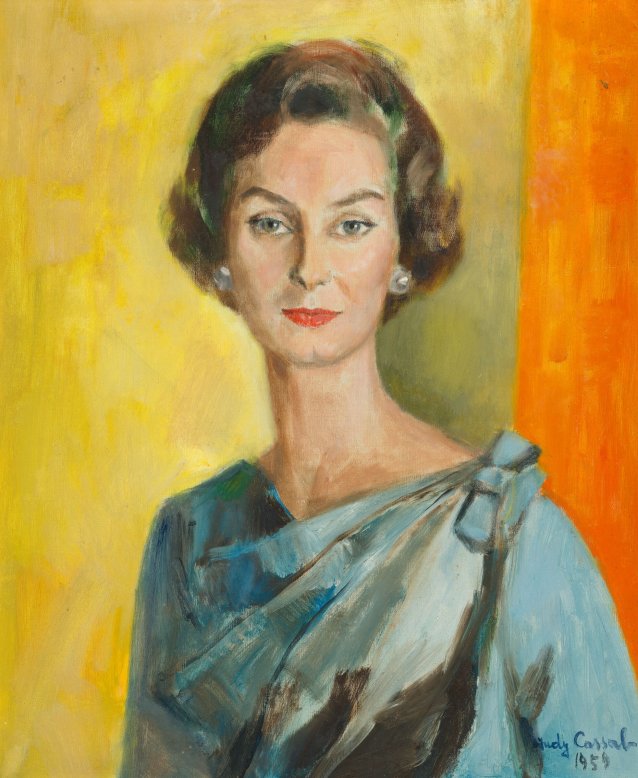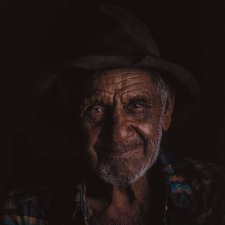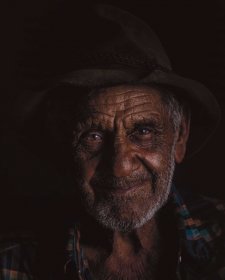The National Portrait Gallery's ever-growing collection tells the remarkable stories of those who have shaped the nation. The generosity of our supporters, donors and members has assisted the Gallery to expand this rich national collection. This year, the Gallery warmly invites you to help us acquire a work by one of Australia's best loved and most successful portrait painters, Judy Cassab AO CBE. Depicting model, entrepreneur and deportment icon, June Dally-Watkins OAM, this work exemplifies Cassab's distinctive style – one which, by combining tradition with modernity and elegance, led to commissions from fashion icons in Australia and overseas. Uniting two iconic women, the portrait shows artist and sitter at the height of their careers. We hope you will assist us to bring this important portrait into the collection.
June Dally-Watkins OAM (1927–2020), model, deportment icon and entrepreneur, grew up on a property at Watsons Creek in the New England district of New South Wales. As a teenager she was noticed on a Tamworth street by a photographer, who encouraged her to move to Sydney to model. She soon booked catwalk shows for David Jones and contracts for Australian Women's Weekly and Woman's Day. In 1950, she established the June Dally-Watkins School, which has since trained countless students in deportment and etiquette in Sydney and Brisbane. The following year she established Australia's first modelling agency. Dally-Watkins died at the age of 92, leaving a lasting legacy not only on the Australian modelling industry, but on the thousands of students to whom she imparted impeccable manners and a knowledge of etiquette.
Judy Cassab AO CBE (1920–2015) created a distinct record of Australian society from 1950s onwards. Born in Vienna, Cassab studied art in Prague and Budapest before adopting false papers and 'going underground' to escape the persecution of Hungarian Jews. After the war, she and her husband reunited and emigrated to Australia in 1951. Within months of arriving in Sydney, she was commissioned by Sir Charles Lloyd Jones to paint a portrait of his wife. In 1960, she won the Archibald Prize for her portrait of her friend, Stanislaus Rapotec; and in 1967, won it again with her painting of artist Margo Lewers. Cassab's work sought to navigate the tension between figuration and abstraction perfecting an expressionist style that captured the subjects' likeness and the spirit of the era.
Donors
Keith Bailey
Anna-Rosa Baker
Peter and Karen Bradley
Sarah Brasch
Francis Breen
Matthew Brown and Julie Alt
Vicki Brown
Judith Cain and Russell Burgess
The Claremonts
Adam Cooper
Greg Cornwell AM
Ann Crewe
Meg Daly
Peggy Daroesman and Bob Hefner
Fiona Davidson
Julia Ermert
Frecker Family
June Gordon
Gerard Harnan and Kelly West
Yvonne Patricia Harrington
Ruth Harris & Nicolas Zographos
Meredith Hinchliffe
Gary James
Professor Anne Kelso AO
Ruth Caroline Kovacic
Gerry and Ted Kruger
Connie Leikas
Elizabeth H. Loftus
Nita Lorimer
Michael Luscombe
Liz Lynch
Lea McAuley
Ingrid Mitchell
Prof Ingrid Moses AO and Dr John Moses
The Hon Justice Debra Mullins AO
Sarah Oakes
Glenn Petrusch
Andrew Phelan AM & Monica Phelan
Celia Rideaux
John Robertson
Paul and Sue Rogerson
Alan Rozen
Eileen Sadler
Kate Sandles
Maggie Shapley
Marian Simpson
Barbara Singer
Susan & Dr Phil Strickland
Bronwyn Vincent and Bruce Harper
Wendy Webb
John Werrett
Murrelia Wheatley
Sally White OAM
Louise A. Willey
Professor David Williams
Wayne Williams
Jim and Peronelle Windeyer
Workplace Research Associates Pty Ltd
Hazel Wright
Jennifer Yeats
Anonymous (15)

















